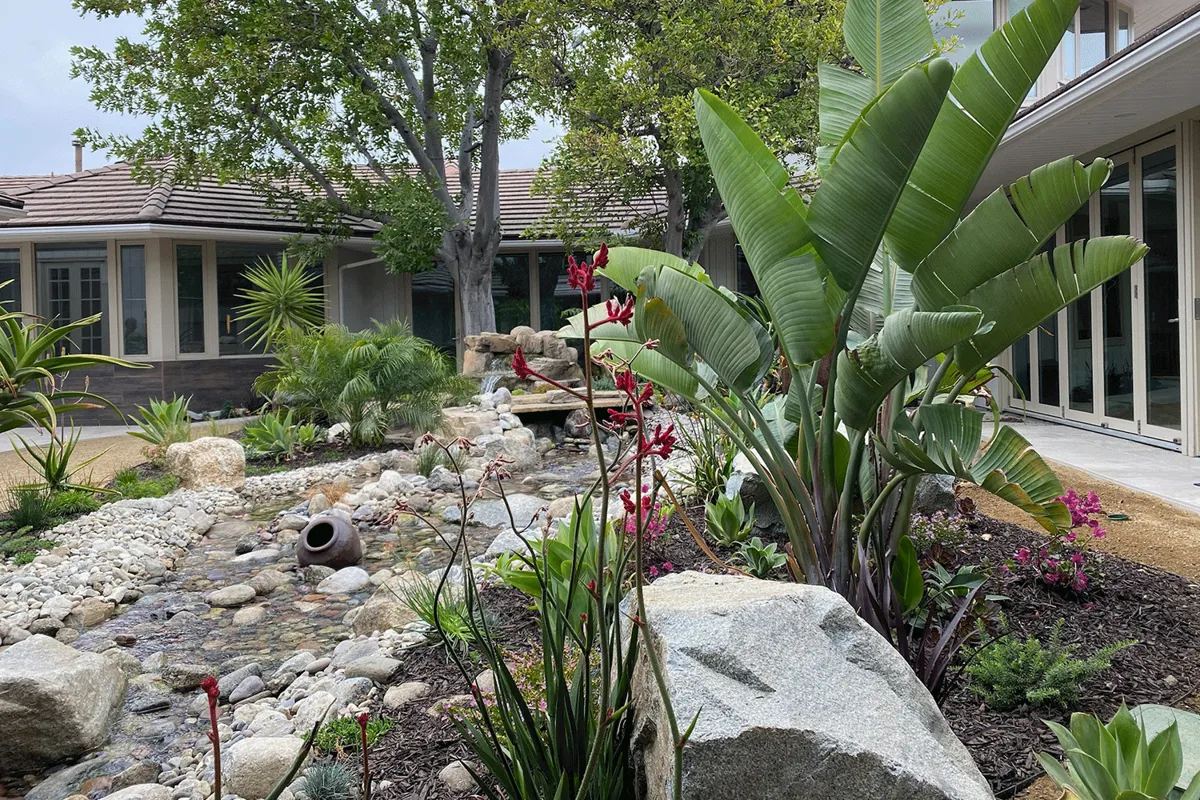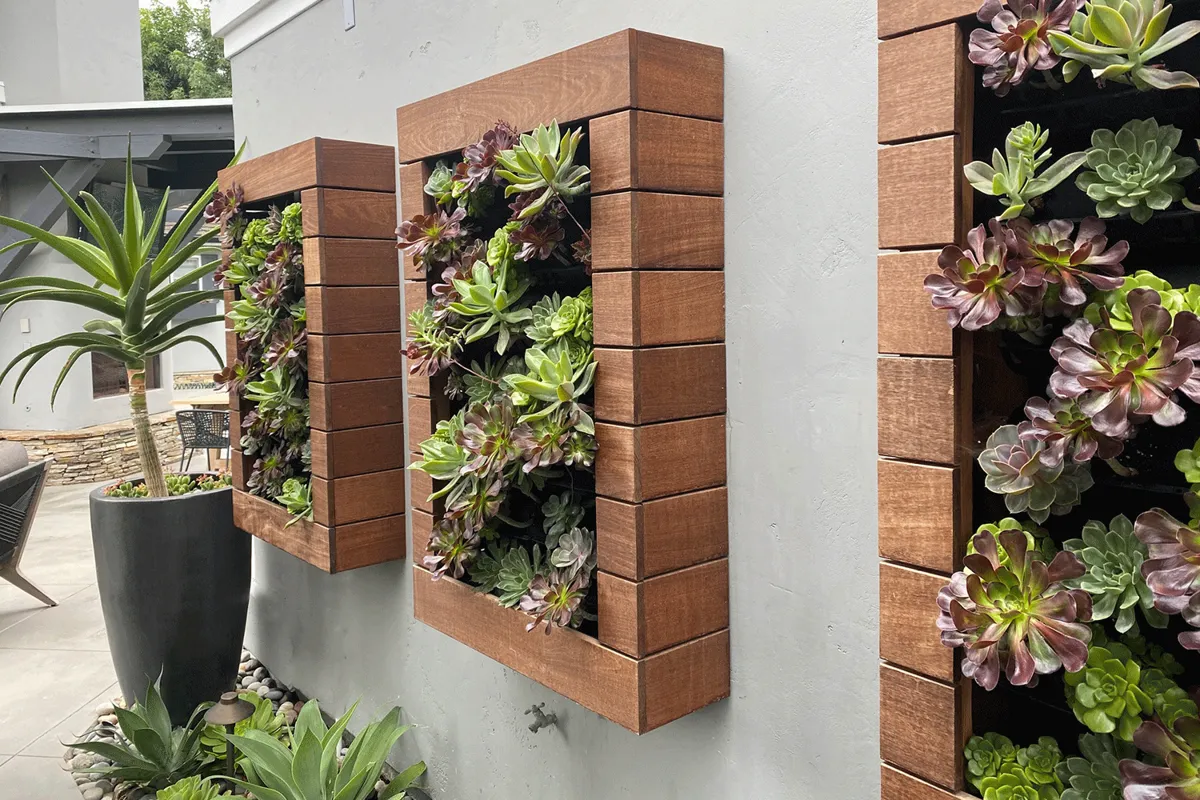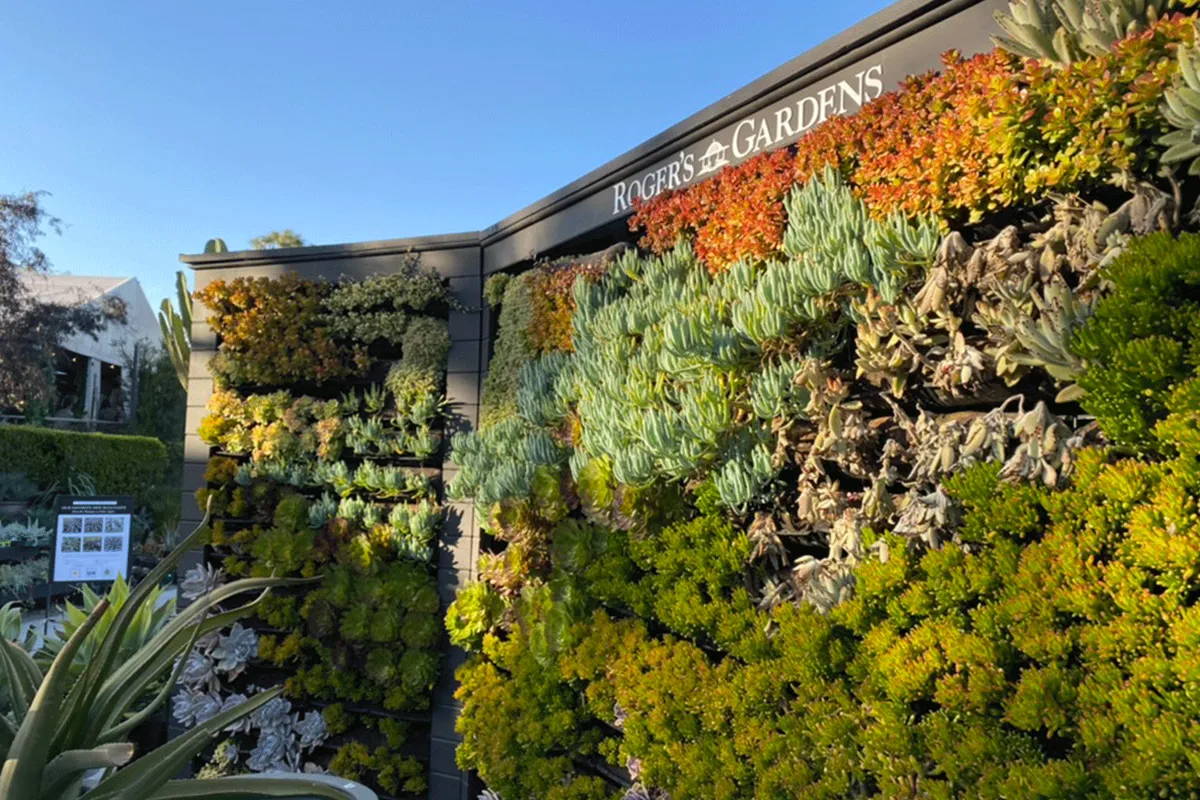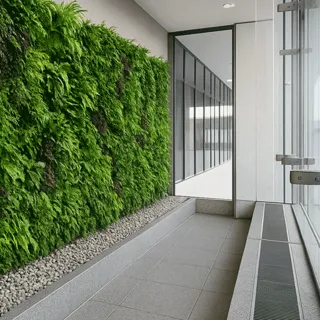Living Walls & Vertical Gardens
Design • Build • Grow
Turning ordinary spaces into extraordinary experiences.
Vertical Gardens & Landscape Design Experts
At Elevation Living Walls, we design and build living walls, vertical gardens, and full-service landscape solutions for architects, designers, and discerning property owners.. Whether repurposing an existing space or envisioning something entirely new, our team delivers a full spectrum of services that elevate your project aesthetically, architecturally, horticulturally, and functionally.
Our Expertise Includes:
– Living walls & vertical gardens that transform interiors and exteriors
– Landscape design & construction tailored to your site and style
– Irrigation systems designed for efficiency and plant health
– Architectural lighting to highlight your spaces beautifully at night
– Grading, concrete, and paving for functional and durable foundations
– Water features & fountains that bring movement and tranquility

Architect + Designers
Immerse yourself in environments where nature meets innovation. Our advanced systems seamlessly blend natural beauty with your space, fostering sustainable and rejuvenating experiences for work, leisure, or lifestyle projects.

Living Wall Project?
Are you a home or business owner, commercial or hospitality business operator looking to build a living wall? Schedule your no obligation discovery call now. Tell us about your project, and we can give you some budgetary pricing and how we can best be of service.

Consulting
We offer expert consulting to bring the art and science of biophilic design to your venues and spaces. From concept to execution, we design custom plant installations that transform environments, blending aesthetic beauty with the wellness benefits of living walls.












Live Remarkable
We're on a Mission to create sophisticated and functional green solutions that enhance well-being and elevate your aesthetic.

















F.A.Q. Frequently Asked Questions
Here are answers to some common questions about Varden Living-Walls and Vertical Gardens.
What do Living-Walls cost?
There are a lot of variables to consider be it indoor or outdoor, edible or ornamental plants. Generally speaking installed system cost approximately $130 - $250 per square foot depending on the quality of the system and the company you work with.
Are Living-Walls worth it?
Wow. There are innumerable benefits, but here are just a few of our favorites:
Improved Air Quality- Living walls can filter pollutants and toxins from the air, improving indoor air quality by absorbing carbon dioxide and releasing oxygen.
Thermal Insulation- Green walls act as natural insulators, helping to regulate indoor temperatures. This can reduce heating and cooling costs by providing an extra layer of insulation.
Noise Reduction- The plants and their growing medium can help absorb and deflect sound, making living walls effective at reducing noise pollution in both indoor and outdoor environments.
Enhanced Aesthetics- Living walls provide a visually appealing and dynamic element to any space. They can transform dull walls into vibrant, living art pieces, enhancing the overall design and ambiance.
Biophilic Design Benefits- Incorporating living walls into spaces aligns with biophilic design principles, which emphasize the human connection to nature. This can improve occupants' well-being, reducing stress and increasing productivity.
Increased Property Value- A well-maintained living wall can enhance the appeal and value of a property. It's a unique selling point that differentiates a property from others in the market.
Biodiversity and Ecosystem Support- Living walls can support local biodiversity by providing habitats for insects and birds, contributing to the ecological health of urban environments.
Sustainability and Environmental Impact- By integrating plants into urban settings, living walls contribute to sustainable building practices, reducing the overall carbon footprint and promoting environmental stewardship.
Brand Image and Corporate Responsibility- For businesses, living walls can enhance corporate image by demonstrating a commitment to sustainability and environmental responsibility. This can resonate positively with clients, customers, and employees.
Health and Wellness- Exposure to plants and greenery has been shown to improve mental health and well-being. Living walls can create a more pleasant and healthier environment for occupants.
Are Living-Walls high maintenance?
Depending on what system you deploy there will be different maintenance requirements. However, you can expect plants to grow and in so doing they will need trimming accordingly. It is important to keep a close eye on the soil. Too much or too little water will create challenges to the plants. Soil is the leading indicator of a health.
How long to Living-Walls last?
We have walls that have been installed and thriving for over 8 years with no plant swaps or substitutions. With proper care and feeding a vertical garden will last as long as a traditional garden plant. Dr Craig Kolodge taught me that the old decaying roots (also called root fluff) become the new soil by which the plants feed in a carbon exchange for sugar.
How long does it take to install a Living-Walls?
A basic residential wall, ranging in size from 40-80 SQF should take 3-5 days. Our typical residential installs take 1-2 days for the hardware and 1-2 days of planting, which are typically conducted offsite. Indoor walls typically take longer.
Can you make your own Living-Wall?
There are a lot of DIY resources available including kits that we sell. Youtube and Pinterest are good resources for such, but it is important to get an engineered system that will allow the plants to mimic a natural environment that would include good soil health, proper irrigation, drainage, circulation and consideration for exposure to the sun.
What are the disadvantages of Living-Walls?
Similar to a salt water fish tank, living walls are remarkable and require proper care and feeding to stay remarkable.
Do Living-Walls create moisture on my wall?
Our system is offset from the wall substrate so there is proper air-flow and no direct contact with the wall. When considering a vertical garden it is important to find a system that will not introduce mold or regular moisture to the wall surface.
How often should I water a Living-Walls?
We water our greenwalls 2-3 min every other day in summer and we adjust down seasonally as needed. Every location is unique and will require adjustments accordingly. Our system is engineered for sustainability and requires less water than most, and each tray is watered individually as opposed to needing water to cascade from above.


When Green Becomes Art: Elevate Your Design Projects
Discover how Elevation Living Walls transform interior spaces into functional art, combining biophilic beauty with acoustic performance, sustainability, and client well-being. ...more
Living Walls ,Design Trends &Biophilic Design
August 14, 2025•1 min read

The Wall That Breathes: Why It’s Time to Stop Designing Flat
Transform flat walls into living art. Discover how living walls bring biophilic design, indoor greenery, and sustainable style to luxury spaces with Elevation Living Walls. ...more
Design Trends
July 31, 2025•3 min read

What Does Your Aesthetic Say About You?
Discover how living walls create unforgettable first impressions, enhance wellness, and communicate your brand’s values. Explore the benefits of biophilic design and how a living wall can transform an... ...more
Living Walls ,Design Trends
July 24, 2025•2 min read

Designing Remarkable Spaces
Transform indoor and outdoor spaces with Elevation Living Walls. We create custom biophilic designs that bring beauty, wellness, and sustainability to any space through stunning, nature-filled vertica... ...more
Living Walls ,Design Trends &Biophilic Design
July 10, 2025•3 min read

Questions Every Designer Should Be Asking Their Clients
Discover the 5 essential questions Elevation Living Walls asks to uncover client vision and elevate design. Perfect for architects and designers seeking purposeful, artful outcomes. ...more
Living Walls ,Design Trends &Biophilic Design
June 26, 2025•2 min read

Architectural Pottery + Living Walls
Discover how pairing Habitudes™ architectural pottery with Elevation Living Walls creates luxurious, biophilic spaces through sustainable design and indoor greenery. ...more
Living Walls ,Design Trends &Biophilic Design
June 19, 2025•3 min read

"Connecting People, Plants, and the Communities that surround us...Vertically"
Serving Southern California and Beyond!
Newport Beach • Corona Del Mar • Laguna Beach • San Clemente • Dana Point • Costa Mesa • Huntington Beach • Irvine • Aliso Viejo • Mission Viejo • Lake Forest • San Juan Capistrano
